This page of CIRCLIST reproduces the substantive part of a leaflet published in 1997 by The Royal Australian College of Obstetricians and Gynaecologists (RACOG). The original document appears to have been intended as a 'primer' for family doctors who might, in consequence of a relaxation of Australian immigration rules, soon begin to encounter female genital mutilation amongst racial groups previously not eligible for admission to the country. It is remarkable for its factual approach, cross-cultural sensitivities and accurate descriptions of the social motivations behind FGM.
One unfortunate omission from Table 1.2 is Pakistan. A figure of 10% might reasonably have been included.
The online copy of this pamphlet was removed from the Internet sometime after RACOG amalgamated with the equivalent New Zealand professional body in 1998; the content reproduced below may not represent the current policy of the successor organisation.
Definition
The World Health Organisation (WHO) has defined female genital mutilation (FGM) as comprising 'all procedures involving partial or total removal of the female external genitalia or other injury to the female genital organs whether for cultural or other non-therapeutic reasons' [1].
This definition encompasses the diversity of procedures performed by different cultural groups. The classification of FGM (see Table 1.1) provides a technical description of the types of procedures which this definition covers. Within each of the types of FGM there will be variation with respect to the amount of tissue removed.
The term female genital mutilation will be used throughout this booklet as it is defined by the WHO. Many other terms have been used to describe FGM but they can be ambiguous and euphemistic and hold different meanings for different cultural groups. Female circumcision is a term previously used widely but this term is anatomically inaccurate in most situations and its further generic use is discouraged.
Use of terminology
The term
female genital mutilation may cause offence to some who practice or have experienced it. Although Western societies may view the practice as mutilation, within the cultures who practice FGM it is performed with the good of the child in mind (see
Beliefs about FGM below). The use of the term
female genital mutilation in consultations therefore has the potential to be counterproductive to the establishment of effective caring relationships. Without the development of such relationships, it may not be possible to meaningfully address the difficult and sensitive issues with which a woman affected by these practices may need
assistance.
It is therefore important when discussing FGM that some care is taken to establish what terms are used by the woman and her family, and to use these where possible. In one to one encounters, it is recommended that the woman be allowed to indicate her own preferred description, by asking her how she describes it. If it is necessary to introduce terminology, phrases such as traditional
female surgery, cutting and
ritual female surgery are suggested.
Female circumcision is also a term with which many women are likely to be familiar. The use of this term at a policy level is generally discouraged as it does not adequately describe the practice, however, if it assists communication it may be a useful term.
The WHO classifications are not necessarily general knowledge and are
unlikely to be useful in consultations.
It is important to avoid endorsing the practices through choice of terminology. One important example is the term Sunna. The Muslim Welfare Board of Victoria states that...
...the term 'Sunna' is a term used in Islam to cover religious values and requirements. Although some women may feel that FGM is a religious obligation this is not in fact the case, because the mainstream teaching of the Sunna has neither commanded, prohibited nor recommended (strongly) the practice of female circumcision [sic] let alone FGM. The use of this term should therefore be avoided as it has the potential to reinforce feelings of religious obligation which are unfounded [2].
Further, health care professionals need to be aware that a single term may be used by different women to describe different procedures. For example,
sunna is used by some to describe a relatively minor ritualistic nicking of the clitoral prepuce, while others will use the same term to describe clitoridectomy. If an accurate understanding of the extent of a woman's FGM is necessary this should depend on examination, rather than terminology used. The use of the WHO definition and classification (see Table 1.1) is recommended for clarity and comparison. However, to unambiguously describe the extent of FGM in an individual case it may be necessary to use anatomically descriptive terms such as
clitoridectomy and
excision.
Classification
Table 1.1:
World Health Organisation classification of female genital mutilation [1].
Definition |
'Female genital mutilation comprises all procedures involving partial or total removal of the female external genitalia or other injury to the female genital organs whether for cultural or other non-therapeutic reasons'. |
Type I |
Excision of the prepuce, with or without excision of part or all of the clitoris; (see Figure 1.2)
Other terms used to describe Type I procedures include circumcision, ritualistic circumcision, sunna, clitoridectomy. |
Type II |
Excision of the clitoris with partial or total excision of the labia minora; (see Figure 1.3)
Other terms used to describe Type II procedures include clitoridectomy, sunna, excision and circumcision. |
Type III |
Excision of part or all of the external genitalia and stitching/narrowing of the vaginal opening (infibulation); (See Figure 1.4)
Other terms used to describe Type III procedures include infibulation, Pharaonic circumcision and Somalian circumcision. |
Type IV |
Unclassified: includes
- pricking, piercing or incising of the clitoris and/or labia;
- stretching of the clitoris and/or labia;
- cauterisation by burning of the clitoris and surrounding tissue;
- scraping of tissue surrounding the vaginal orifice (angurya cuts) or cutting of the vagina (gishiri cuts);
- introduction of corrosive substances or herbs into the vagina to cause bleeding or for the purposes of tightening or narrowing it;
- and any other procedure which falls under the definition of female genital mutilation given above.
|
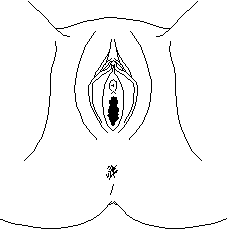
Figure 1.1: Unaltered female genitalia
|
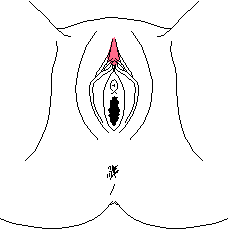
Figure 1.2: Tissue removed in Type I FGM
|
Figure 1.3: Tissue removed : Type II FGM
|
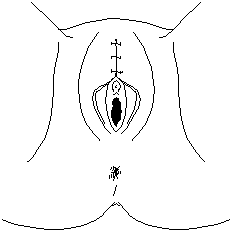
Figure 1.4: Appearance of Type II after suture
|
Figure 1.5: Tissue removed : Type III FGM
|
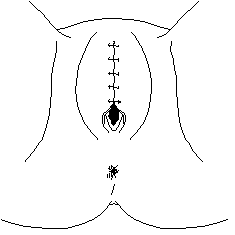
Figure 1.6: Appearance of Type III after suture
|
N.B. These figures are examples only, considerable variations occur within FGM types. |
While there is no direct evidence that FGM is being practised in Australia, there are increasing numbers of immigrants who come from ethnic groups who practice FGM and therefore, increasing numbers of women who have been affected are being seen in the Australian health care system. The 1996 Census indicated that there were over 120,000 women in Australia who were born in countries where the practice of FGM has been reported. There is, however, no information regarding the likely proportion of the women in Australia who will have been affected by the practice.
There are many communities known to practice FGM, and possibly many unknown. Table 1.2 includes a list of the countries of origin of communities who are known to perform FGM. An awareness of these countries will be an important tool for health care professionals to anticipate whether FGM may be a consideration for the women they see. However, it should not be assumed that because a woman is from one of the countries listed that she will have undergone FGM. The prevalence estimates included in the table provide an indication of the proportion of women from each country who may have undergone FGM.
Each woman should be approached individually with awareness that she may have undergone FGM but no assumption that this has occurred.
Origin
The exact origin of female genital mutilation is unknown. There are many theories of the origin and reported documentation of the practice as long as six thousand years ago [8]. Infibulation (Type III FGM) is thought to have been practised by Egyptian Pharoahs [9, 10] and clitoridectomy was used in Western medicine up to the late 1950s as a treatment for nymphomania,
promiscuity and masturbation [8, 11].
Distribution
Table 1.2:
Countries where communities are known to practice female genital mutilation.
Region |
Countries |
Prevalence estimates*
[3,4,5,6,7] |
Asia |
Indonesia, Malaysia |
practice has been reported but no data is available |
India |
less than 10% |
Africa |
Djibouti, Sierra Leone, Somalia, Egypt |
90% and over |
Eritrea, Ethiopia, Gambia, Sudan |
80-89% |
Burkina Faso, Chad, Guinea, Liberia, Mali |
0-79% |
Ivory Coast, Central African Republic, Ghana, Benin, Guinea Bissau, Kenya, Nigeria, Togo |
30-59% |
Senegal, Niger, Mauritania, Cameroon |
10-29% |
Congo, Tanzania, Uganda, Zaire |
less than 10% |
Middle East |
Oman, United Arab Emirates, Yemen |
practice has been reported but no data is available |
* Research on the prevalence of FGM is very limited and estimates are generally the only data available. These estimates incorporate those made within a number of different sources which are widely cited. However, the data are, and should be used as, a rough guide only. There has been no comprehensive research carried out in Australia and the appropriateness of generalising these figures has not been investigated. These figures are presented here in the absence of more accurate information and are subject to revision. |
Prevalence
The exact prevalence of FGM is difficult to estimate as limited research has been undertaken. The WHO estimates that 130 million women world-wide have undergone some form of FGM, with an annual incidence of 2 million [12].
The most common types of FGM are Type I and Type II (see Table 1.1) which account for up to 80% of all cases. Type III FGM, the most extreme form of FGM (commonly known as infibulation) constitutes approximately 15% of all procedures [10].
The procedure
As there are a number of different types of FGM and much diversity between the different practising communities there is huge variety in the way the procedures are performed.
Many of the descriptions available describe the procedure as primitive and performed in unsterile conditions [4, 9, 13]. The practice has traditionally been performed by women without formal training, known as traditional birth attendants, who may have used primitive instruments, razor blades or pieces of glass. Women who underwent FGM in traditional settings are unlikely to have had an anaesthetic and may have been held down by a number of older women to restrict struggling. This may have resulted in more extensive physical damage than was intended. With the more extreme procedure of infibulation (Type III FGM) the raw edges of the labia majora will have been sutured using catgut or possibly thorns and the legs bound together to encourage healing.
However, while some may still undergo the procedure in traditional settings, in some communities FGM is now performed in modern clinical settings by medically trained individuals [6, 13, 14].
Reports of the practice being performed in Western countries such as France and the UK suggest that the practice has migrated with the practising communities [4].
Age
The age at which girls undergo FGM varies between communities. For example, in some communities FGM is understood as a passage to womanhood and is therefore performed on girls of 8 or 9 years of age as part of an 'initiation' ceremony [6, 14]. In other communities FGM is performed just prior to marriage and in others when the girl is only a few days old [4,15]. It is thought that the age at which FGM is being performed is reducing and that the association with initiation into adulthood is diminishing [8].
Beliefs about female genital mutilation
Health care practitioners need to understand the complexity and potency of the belief systems that sustain the practice of FGM. Health care initiatives, education about health consequences and any other efforts to eradicate the practice need to be placed in context of the understanding held by the individual and her family, and the complex web of influences which maintain this understanding.
Female genital mutilation is practised in many vastly different communities. However, there is a tendency for these communities to be both patrilineal and patriarchal. Paradoxically, within many of these communities the tradition of FGM is often upheld and supported by women. The practice is understood as vital for the maintenance of valued social structures including patrilineage, family honour and social position. FGM is sustained
by the belief that it is in the best interest of the child, providing her with a future as an honourable wife and mother. Failure to participate is
considered by many to place the child at risk.
Some of the reasons that may be given for FGM are listed below. They are only intended to give an indication of the possible beliefs held by those who practice FGM and there will be marked variety from community to community and also at an individual level.
There is potential for victimisation and ostracism of members of affected communities who wish to discontinue the practices and health professionals who oppose FGM may be seen as racist. It may also be helpful to understand that both opponents to and proponents of legislation against FGM have the interests of the welfare and successful future of girls and women in mind.
Tradition
Tradition is one of the more common reasons given for performing FGM. For many, FGM is a normal part of a woman's life, experienced by all women. It is an expected and anticipated step in a girl's development to adulthood. The practice may be associated with cultural celebrations of the passage of the young girl to womanhood and this can involve present giving and feasting. This tradition is upheld by social pressure to the extent that girls may be stigmatised and ostracised for non-compliance [5].
Social cohesion
The tradition of FGM is also linked to the understanding of family honour, a vital component of community position and of community cohesion. Honour is jealously guarded by a family and can be lost through the actions of its members, in particular the female members 10]. FGM is considered to be a normal precaution to ensure the morality of girls and the preservation of virginity [13] and in times of war FGM has been considered to protect women against rape. The practice of FGM is perpetuated within the social system, as deviation from the norm implies immorality and therefore can cause loss of honour ('son of an uncircumcised mother' is reported to be an extreme term of abuse in some communities). This is particularly detrimental for females as marriageability will often be the only opportunity for status and economic support beyond their family.
Female genital mutilation is also thought to foster social cohesion between groups of girls who are operated on in the same time period, as girls will affiliate with those who have undergone the same experience at the same time [5].
Religion
Female genital mutilation has been reported to be practised by Christians (Protestants, Catholics and Copts), Muslims, Jews, Animists, and atheists [5, 14]. Religious requirement may be understood by the individual as the reason that FGM is performed. However, FGM is not included within the formal teachings of any religion. The association of FGM with religious belief and obligation is assumed to be the result of historic concurrence and incorrect teaching and/or understanding of religious texts.
Female genital mutilation pre-dates most modern religions, including Christianity and Islam.
One commonly held misconception about FGM is that it is prescribed within the Islamic religion. However, there are many Islamic people around the world who do not practice FGM, notably those of predominantly Islamic Middle Eastern countries, such as Saudi Arabia. For some women the procedure is understood to be sunna, a religious requirement prescribed within teachings of the Prophet Mohammed. However, there is considerable debate on this issue within the religion [16].
Marriageability
Female genital mutilation is practised in communities where, in general, women will have limited access to economic or social resources and must be eligible for marriage to secure a means of future support [14]. FGM is thought to increase marriageability by ensuring virginity which is almost always considered a prerequisite for marriage. FGM may also be thought to ensure the lineage of any children by limiting pre-marital sex and encouraging fidelity during marriage (as FGM will lessen sexual desire). Others believe that FGM enhances fertility and/or increases a man's sexual pleasure, both of which enhance a woman's attractiveness as a wife [17].
Economics
In some societies the practice of FGM provides the traditional birth attendants with power, status and money not usually accessible to women outside of the private domestic sphere [6,16]. Traditional birth attendants, or excisors have traditionally performed not only the FGM operations, but also the opening of the vaginal introitus to prepare for marriage and childbirth and any repetition of the procedure after childbirth. Each stage provides a source of income.
In addition, in some communities FGM is considered in the negotiation of bride price and therefore further contributes to the local economy [6].
Female genital mutilation is also known to be practised in modern clinical settings, including private clinics which may foster the continuation of the practice as it provides a profitable source of income. Clinicians may also hold the belief that if the procedures will inevitably take place, it is better that they be done in circumstances where
anaesthesia and appropriately clean surgical techniques may be used. This medicalisation is a further factor potentially contributing to the perpetuation of the practices.
It is assumed that in Western countries where communities may be continuing the practice illegally there is the potential for backyard operators to perform FGM procedures [18].
Gender roles and sexuality
In some groups FGM functions as a way of marking the girl so that she is able to fulfil her role as a woman, a wife and a mother. The practice may be understood as the determinant of gender identity [17] which may be closely related to the concepts of chastity, the safeguarding of the purity of women and the control of female sexuality, all of which may be preconditions for the ability to marry and have children [6].
In some cultures it is believed that the clitoris is a masculine feature which must be excised to create true femaleness [19], some also believing that the clitoris is an infant penis whose growth must be forestalled by surgery [13]. Women who have not undergone FGM are thought to maintain, or have the potential to develop, characteristics thought to be appropriate only for men, such as sexual desire, aggressive behaviour and promiscuity.
Feminist commentary cites FGM as evidence of the continued oppression of women. The removal of the clitoris is seen as an attempt to control the sexual activities of women; a denial of the freedom of sexual desire and expression. FGM is seen as a misogynistic message about the expectation of the behaviour appropriate for the female gender, including the prohibition of sexual pleasure and freedom and the expectation that women should exhibit behavioural characteristics such as compliance and docility.
Aesthetics and hygiene
Within different cultures various aspects of FGM are seen to enhance beauty. Female genitalia are considered by some to be ugly and impure and FGM is thus associated with beautification. In some communities genitalia are thought to be most desirable when smooth to touch and with no evidence of a cleft [4, 20].
In some communities where the clitoris is thought to produce an offensive discharge and/or exude a rank odour [13], FGM may be considered to be associated with cleansing. This is illustrated by the Arabic word for FGM, tahur, which literally means purity and cleanliness. Some also believe the clitoris discharges 'pollutants' which are a danger to the health of the fetus during childbirth.
There is also a belief that if a woman has not undergone infibulation air will enter through the vagina and cause infection.
Copyright © 1992 - , All Rights Reserved CIRCLIST.






